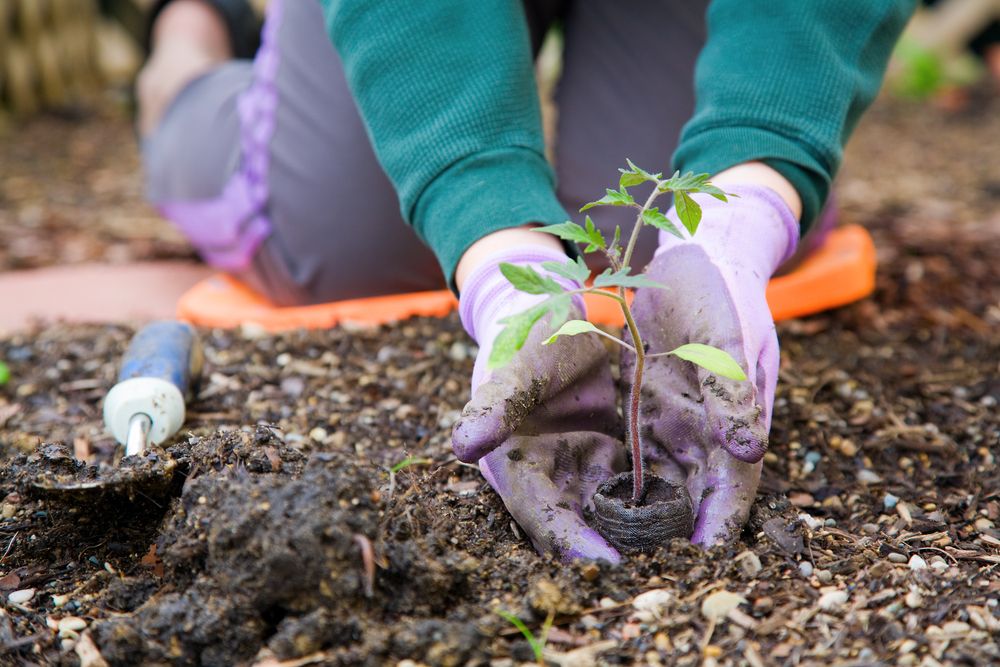For many, enjoying time outdoors in a garden on a sunny day is a favorite summer pursuit. Studies show that gardening helps reduce stress, improve mental and physical health and helps with depression. And like other regular physical activity may help reduce health risks, including heart disease, obesity, high blood pressure, adult-onset diabetes, osteoporosis and stroke.
Although gardening may be a favorite pastime, caution is advised when it comes to gardening while in cancer treatment. Due to the potentially dangerous molds and bacteria that many plants harbor which can harm a compromised immune system. The period of time beginning 7–12 days after each completed chemotherapy session is the time when you may be at the greatest risk for infection. Check with your doctor to see if it’s considered safe for you to return to gardening between treatments or to determine when it’s safe for you to resume regular gardening after your treatment is completed.
Your health and safety is a priority. Here are some tips to keep in mind:
- Do not keep fresh flowers or live plants in your bedroom or around the house. Plants may shed mold into the air and the water in that vase of beautiful flowers may include infectious bacteria which can evaporate into the air become a source of infection. If you, or a patient in your home, love flowers and plants, fill your walls with photos or paintings of flowers and plants, or keep books of flora around to look at and enjoy. If well-meaning friends or family bring you flowers or plants, consider donating them. Remember that this is a temporary period of being extra careful with your health, and once your body resumes its normal level of immunity, you can bring those plants and flowers back into your home.
- The Center for Disease Control (CDC) advises against any unnecessary contact with soil, which can contain bacteria and molds. When your immune system is weakened by chemotherapy, those bacteria and molds can lead to an increased chance of fungal infections, which, of course, you want to avoid.
- If you do choose to spend time outside in your garden, be sure to protect yourself with long sleeved shirts and long pants. Also wear gardening gloves to protect your hands from cuts and scrapes, reducing the risk of bacteria entering your body should you be pricked by thorns or scratched by branches. After gardening, be sure to wash your hands, arms and any other exposed parts of your body well with soap and water.
Keep in mind that these precautions won’t last forever and you’ll be back to enjoying your usual gardening routine soon. In the meantime, use this recipe to enjoy the benefits of fresh fruits and vegetables that are available from our bountiful summer gardens.
Pico de Gallo
Ingredients
- 6 tomatoes, preferably Roma (or 3 large tomatoes), diced
- ½ medium onion, finely chopped
- 1 clove garlic, finely minced
- 2 serrano or jalapeño peppers, finely chopped
- 3 tablespoons fresh cilantro, chopped
- juice of 1 lime
- ⅛ teaspoon oregano, finely crushed
- ⅛ teaspoon salt
- ⅛ teaspoon pepper
- ½ small avocado, diced
Directions
Combine all of the ingredients in a glass or stainless steel bowl. Serve immediately or refrigerate and serve within 4 or 5 hours.
Yield: 8 servings
Serving Size: ½ cup
Calories: 42
Total Fat: 2 g
Saturated Fat: 0 g
Cholesterol: 0 mg
Sodium: 44 mg
Total Fiber: 2 g
Protein: 1 g
Carbohydrates: 7 g
Potassium: 337 mg
